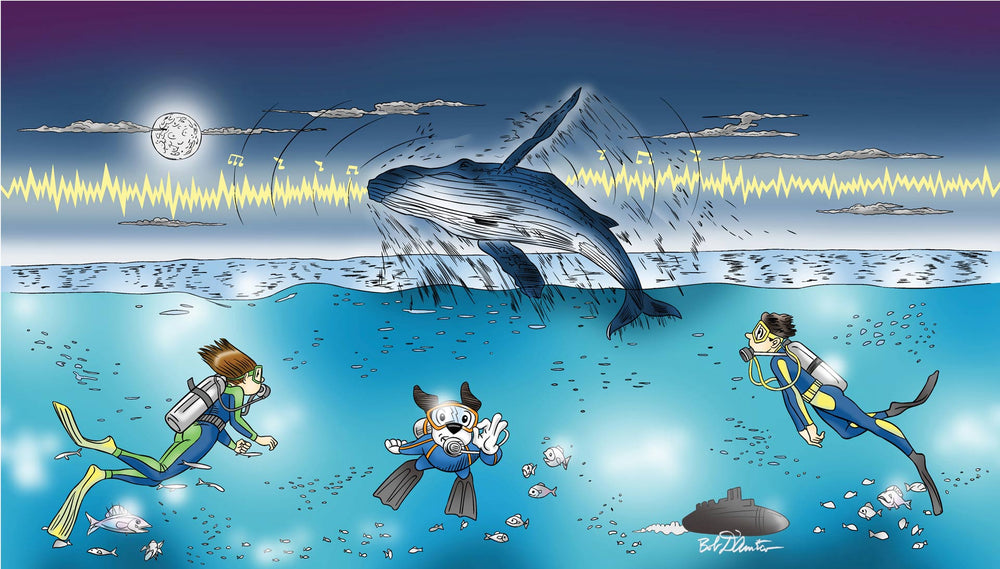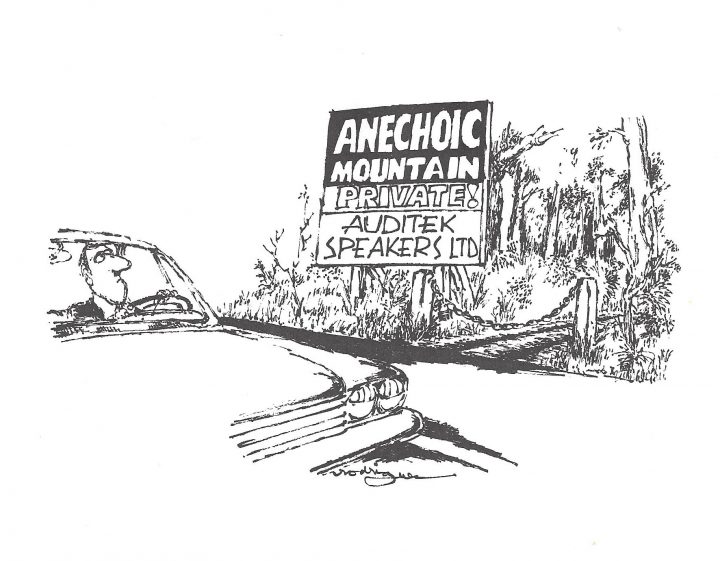I have just read what is without hesitation the most … what is the correct expression here? … profoundly unsettling work of non-fiction that has ever passed through my hands. It is called Command And Control, by Eric Schlosser, and was a finalist for the 2014 Pulitzer Prize. It is really two books in one, with the two related narratives intertwined throughout. One is a blow-by-blow account of an incident in a Titan-II nuclear missile site in rural Arkansas which occurred in 1980. The other is a sanguine treatment of the challenges, both technical and political, brought about by the sudden emergence of nuclear weapons offering apparently limitless destructive capability. The book is supremely well-written, and its cover displays the most epically irrelevant endorsement ever, identifying the author as the person who also wrote Fast Food Nation.
If I were to design and sell a high-end power amplifier, chances are it would fail to deliver against the highest standards of sonic excellence, in which case I might stand to lose any investment I made in it. Which is too bad, but then again I couldn’t design an amplifier to save my life. But what would be the worst case scenario? I suppose an electrical fault could cause it to electrocute its owner, which would end up being pretty bad for me, but far worse for the late owner and his grieving family. But all things considered, unless the poor dead owner was Kim Kardashian it probably wouldn’t make page 26 of your local newspaper, let alone the front page of The New York Times.
That’s not how it is with nuclear weapons, where the worst thing that could happen might be that we wipe out all of humanity.
I was born in the 50’s, grew up in the 60’s and 70’s, and emerged as a functional adult in the 80’s. Throughout those formative years, the threat of nuclear annihilation was an ever-present backdrop, as were the political protests of the various anti-bomb movements around the world. I clearly remember both. I am just about old enough to remember the ominous quiet and the somber faces that were everywhere during the Cuban Missile Crisis.
Nonetheless, we managed to survive all those decades without even a little bit of Mutually Assured Destruction. None of the nightmare scenarios ever unfolded, and we’re all still safe and sound. Well, I suppose some pretty worrisome regimes also have the bomb now, so we have that to fret over, but you get my point. Those bombs may have been terrifying, but all that technology was developed by the smartest brains on the planet, and it turns out we were completely justified in having relied on it to keep us safe. At least that’s how I felt about it, without having gone to any great lengths to be better informed.
Command And Control goes about setting that record straight. It seems to me that no intelligent person would fail to benefit from reading it.
Coming out of WWII, the United States had already let the atomic genie out of the bottle, so although there was some serious discussion about whether or not to abandon – or even ban – atomic weapons development, that horse had for all practical purposes already bolted. So the major questions were then two-fold … how to develop the weapons themselves, and how to implement both the strategic and political systems with which to operate and control them.
Schlosser’s book takes us through all of these issues and the various political machinations that adhere to them. And he adds one more question – quite a biggie – that everybody in charge seemed to want swept under the carpet … were they safe? He opens our eyes to the ramifications underlying that question. But more than anything else, it is the political machinations – and particularly the power of the armed forces to set the political agenda – which jumps out of the page at you. The central issue was that “the bomb” was nothing other than a weapon (nuclear power generation notwithstanding). Realistically, you had few options for who would assume control over something that was 100% weapon and 0% anything else, aside from the military. The military had evolved into what it was over a period of hundreds of years, and was, at least in principle, eminently suited for that evolutionary purpose. The trouble was that stewardship over nuclear weapons was a purpose for which, at that point in history at least, it turned out to have been remarkably badly adapted.
As I mentioned, one half of Schlosser’s book is a blow-by-blow account of a serious accident that befell a Titan II missile silo in Damascus, Arkansas, in September 1980. The Titan II missile was equipped with the W53 warhead, a 9-megaton H-bomb that was the most powerful in the US arsenal. This is a straightforward linear drama that was adapted by PBS into a documentary for its American Experience series. The documentary makes for as gripping viewing as the book’s reading, but even at 90 minutes long it can’t cover everything, and in particular it fails to do justice to the aftermath, and the blame culture of the Air Force in taking the easy route of assigning responsibility to the serviceman who dropped the wrench, rather than taking ownership of the institutional shortcomings that underpinned all aspects of the whole sorry episode. You’ll need to read the book for a fuller appreciation of those issues. Here is the PBS show, in its entirety, available on YouTube.
But it’s the other half of Schlosser’s book that, to my mind at least, made for the most compelling reading, and will leave you with the most indelible impressions. There are so many profoundly shocking revelations that emerge from it, and here are a few for you to ponder, presented as cold-bloodedly as possible. But I can’t recommend highly enough that you just go and read it for yourself.
Thule, 1968.
In 1968, a B-52 bomber, armed with four H-bombs, was circling over an early warning station in Thule, in northern Greenland. The purpose of the warning station was to detect incoming missiles fired on a trajectory from the Soviet Union to America, over the North Pole. The bomber had two purposes; the first was to keep an eye on the base at Thule. If the Russians wanted to launch an attack on America, one of the first things they would need to do was to take out the early warning bases. Therefore, so long as the B-52 could verify that the base at Thule was still there, it was a good sign that the USA was not under a missile attack. However, the second purpose was that in the event a Soviet launch was detected, the B-52 was already half way to Russia, and could be immediately re-tasked with an offensive mission. For this reason the bomber always flew armed with a full payload of nuclear weapons.
The B-52, as it happens, had dreadfully uncomfortable navigators’ seats, and this particular bomber’s navigator decided to address the problem by padding the seat with four rubber cushions. Five hours into the flight the cabin heating failed, and rather than returning to base for repairs, the captain responded by diverting some of the engine’s heat into the cabin. Unfortunately, the navigator’s rubber cushions blocked the vent, and since the engine air was seriously hot, the cushions caught fire. The burning rubber created a huge quantity of thick black smoke, and furthermore it resisted all attempts to put it out with a fire extinguisher. The crisis deepened, and the B-52 lost all power. The crew bailed out, and the aircraft slammed into the ice, just seven miles west of Thule.
Bomb designers generally didn’t know whether nuclear weapons were “fail-safe” under conditions such as these. There were (and are) practical limits to how much testing you could do to satisfactorily engineer safety features into a nuclear weapon encountering all manner of extreme failure scenarios. Not to mention the fact that test ban treaties further complicated the whole matter. So nobody could have said with any degree of certainly that a payload of four H-bombs would not go off if you slammed them into the ground at 600mph. It was therefore a great relief that, as it turned out, they did not.
If the nuclear bombs had gone off, it would have taken out the entire Thule early warning station. And a nuclear event at Thule, coupled with the loss of the circling B-52, would in turn have triggered an immediate all-out retaliatory strike. The world as we know it would have been all over within 30 minutes. Just like that.
NORAD HQ, 1960.
A group of business bigwigs with major defense contracts were given a tour of the NORAD HQ in Colorado Springs, during which the Executive Vice-President of Bell & Howell was invited to sit in the commander’s chair. Above a huge panoramic map display, a number would flash in the event that a “situation” occurred. Number 1 would flash if an unidentified object were detected travelling towards the United States, and the numbers would get higher as the threat level escalated, culminating at Number 5 indicating a 99.9% certainty that the USA was under attack. As the Bell & Howell executive made himself comfortable in the chair, Number 1 began to flash, and the number rapidly began to rise. When it hit 4, senior NORAD officers ran into the room, and as it hit 5 the executives were bundled out and put in a small office.
The commander in the room was a dapper Canadian, Air Marshall Slemon. With only minutes in which to react, he asked his chief of intelligence “Where is Mr. Khrushchev today?”. The answer came back, “Khrushchev is in New York, at the United Nations”. Slemon kept his proverbial finger off the proverbial button, and, after twenty minutes had elapsed, with no Soviet missiles exploding anywhere, the three businessmen were released from their “office” and allowed to leave.
Without those three civilians being present – one of whom, Charles H. Percy, went on to become a Republican senator from Illinois – it is unlikely that the incident would ever have come to public attention. In any event, the subsequent investigation showed that the false alarm was caused when the early warning station at Thule mistook the moon rising over Norway as dozens of long-range missiles launched from Siberia! The official position of the Air Force remains that the missile warning had never been taken seriously, but Senator Percy disputed that account, and recalled a strong sense of panic at NORAD. Either way, I’m just grateful that Khrushchev chose that day to beat his chest at the UN over American imperialist ambitions in West Berlin.
General Curtis LeMay.
One of the most accomplished and successful military leaders in US history, Curtis LeMay became – and remains to this day – the youngest four-star General in US armed forces history since Ulysses S. Grant. From 1948 to 1957 he was commander of Strategic Air Command, and from 1957 to 1965 served as Chief of Staff of the US Air Force. In the satirical 1964 movie Dr. Strangelove, the character of General Jack Ripper was famously based on LeMay.
Throughout the nuclear era, first under Truman, then Eisenhower and Kennedy, LeMay consistently and unapologetically advocated for a “first-strike” approach by the US using atomic weapons. His approach was, from his perspective, an entirely pragmatic one. In the early 1950’s, his argument to Truman was that the US still had a substantive lead over the Soviet Union in nuclear weapons, but the Soviets were known to be working on them. Therefore, LeMay argued, the US should launch a first strike to remove that threat before it got off the ground. Truman demurred.
Later, his position became that, since any exchange of nuclear weapons between the Soviet Union and the United States would result in the ultimate destruction of the United States, the latter’s only available strategy had to be to launch a totally unexpected first strike. Fortunately, Eisenhower wasn’t buying it either.
Under the Kennedy presidency, with the world hovering on the edge of Armageddon due to the Cuban Missile Crisis, LeMay pressed for Kennedy to launch an all-out nuclear attack on Cuba, with the aim of destroying all of the Soviet nuclear missiles which were already there. His analysis was that because the attack was on Cuba, Krushchev would have had no choice but to refrain from responding with a nuclear strike of his own, since such a strike would inevitably result in a full-scale American launch on Russia. Once again, and one would have to say fortunately, Kennedy declined to accept LeMay’s advice.
The Hot Line.
In among the color-drains-from-your-face moments was … at least I thought it was … a single moment of dry humor. At the height of the Cuban Missile Crisis, communications of the utmost urgency had to be promptly delivered between the representatives of the antagonists, and there was no official communications channel with which to do it. I’m talking about a physical channel, not an “Our man Chuck has a solid relationship with Yuri” type of back-channel. Instead, urgent messages from the Soviet embassy had to be encoded by hand, and then given to a Western Union messenger who would arrive at the embassy on a bicycle! Soviet ambassador Dobrynin later expressed his concerns with typically dry Russian candor: “We at the embassy could only pray that he would take it to the Western Union office without delay, and not stop on the way to chat with a pretty girl.”
The high drama of the Cuban Missile Crisis did result in the creation of the infamous “Hot Line” linking the Kremlin, the Pentagon, the White House, and Moscow’s Communist Party headquarters. But unlike the red telephone handset beloved of the movies and TV shows, it actually comprised a more prosaic teletype machine that could exchange text messages quickly and securely. Written statements were considered easier to translate, more deliberate, and less subject to interpretation than verbal ones. Every day, once an hour, test messages were sent, alternately from Moscow (in Russian) and Washington (in English).
The “Hot Line” itself would not survive a nuclear attack, since its role was exclusively to aid in preventing one.









